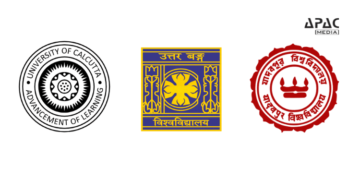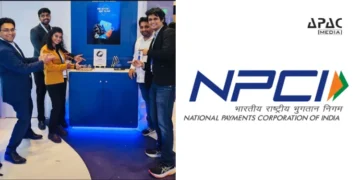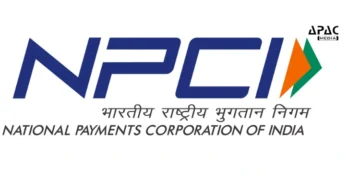Recognition-driven culture, quarterly appraisal models and inclusive policies are redefining workforce management in India’s healthcare outsourcing sector, setting new benchmarks for retention and engagement in a traditionally high-attrition industry. Dr. (HC) Guruvayurappan PV, CHRO – Omega Healthcare, shares with Sugandh Bahl Vij, Assistant Editor, CXO Media & APAC Media, how Omega is leveraging recognition frameworks, in-house talent academies and DEI initiatives to build a loyal, future-ready and people-first organisation.
Omega’s recognition architecture ranges from instant peer-to-peer appreciation to the Omega Global Awards (OGA). How do you measure participation and fairness across these layers of recognition?
The framework of our recognition architecture is built on the pillars of transparency, inclusivity and a general attitude of gratitude towards our employees who are the foundation of our organisation. We have multiple ways through which we ensure that our employees feel recognised and valued during their employment, from organising events such as the Omega Global Awards and The Golden Brick Award to systems that facilitate instant peer-to-peer appreciation.
Participation is measured through real-time tracking of peer-to-peer appreciation through internal systems such as CREDO Spark and tools such as Amber AI facilitate honest and transparent communication between employees.
We further ensure fairness and inclusion through monthly townhalls, leadership connects, and engagement platforms such as Xtramile.
To ensure fairness for large-scale awards, including The OGA and GBA, nominations are carried out through a structured evaluation process. Panels comprising cross-functional leaders assess nominees against predefined criteria like innovation, customer impact, teamwork, and values alignment. All of these practices ensure that the fairness and participation of employees are thoroughly maintained.
Most companies still follow the annual appraisal model, but Omega uses a quarterly review cycle. What led you to take this leap, and what resistance do you face from managers or employees? How do quarterly reviews impact employee engagement, motivation, and attrition compared to the industry’s annual review benchmarks?
In India and globally, many companies still follow the norm of annual appraisals, a system which might be becoming a little outdated.
At Omega Healthcare, after a lot of careful consideration, we took the step of introducing a quarterly appraisal model. This was a strategic step which was taken to boost morale and engagement rates among employees. We developed an internal model which rated employees across three parameters which were productivity, quality and domain knowledge.
Based on these parameters, the employees were rated on a five-star scale with scores categorised as Exceeds Expectations (EE), Above Expectations (AE), Completely Meets Expectations (CME), Partially Meets Expectations (PME) and Needs Improvement (NI). And only those employees who get an average quarterly rating ‘Completely Meets Expectations (CME)’ and above will be eligible for a quarterly salary increment.
There were multiple challenges that we had to face while navigating the formation of the policy. Designing and executing this policy required extensive coordination across HR, finance, and executive leadership teams. Omega’s HR and finance teams collaborated with CXOs over nine months, running at least 60 budget forecasting versions for the next five years to ensure the financial sustainability of these quarterly hikes
The results of this transition speak for themselves. Our rate of attrition dropped by almost half, from 6.1% to 3% and the number of employees who were rated ‘Exceeding Expectations’ rose to almost 30% every quarter. Thus, this step greatly contributed to reducing attrition rates and increasing motivation and engagement among employees.
Research suggests recognition has a direct correlation to retention and eNPS. How has Omega tracked and validated this linkage internally? Can you share a few powerful recognition stories (resilience, loyalty, impact) that became culture-shaping moments within Omega?
Research does point out the direct correlation between recognition of employees and their retention. This simply means that employees who receive quality recognition have less chance of leaving the organisation as compared to those who don’t. At Omega, we have an employee engagement of 92% and a net promoter score of +40.
Beyond data, this is demonstrated by one of our most powerful employee stories over which we have immense pride. One of our employees, Roshi R, who works as an assistant manager in delivery, was incredibly supported by her team members when she decided to transition from male to female. The HR team was with her throughout her journey and we are proud to say that she has been working with us for 6 years now.
Omega has trained 18,000+ coders in-house through the Omega Medical Coding Academy (OMCA). In an industry that typically relies on lateral hiring, how has this internal academy shifted your dependency curve? What is the ROI of OMCA in terms of reduced hiring costs, lower attrition in the first 12 months, and faster time-to-proficiency compared to lateral hires?
Omega Healthcare’s Medical Coding Academy (OMCA) has enabled us to reshape how we approach talent creation in the medical coding space. Traditionally, the healthcare services outsourcing industry has leaned heavily on lateral hiring, which comes with its own set of challenges, such as higher recruitment costs, a mismatch between skillsets, a higher training cost and a longer time for any employee to fit into the organisational culture. By training 18,000+ coders in-house through OMCA, we have successfully built a pipeline of professionals skilled enough to meet global regulatory requirements as well as client needs.
The ROI of OMCA can be measured across multiple dimensions. First, recruitment costs are substantially lower, as dependency on external hiring agencies and inflated lateral hire salaries is reduced, since we hire internally from OMCA. Secondly, attrition among academy-trained coders is notably lower.
Further, according to our internal surveys, OMCA-trained coders demonstrate higher retention rates within the first 12 months compared to lateral hires, primarily because they are trained and nurtured according to the cultural environment at Omega. Finally, the time-to-proficiency rates are also accelerated. Lateral hires often take more time to adjust to the environment and workplace culture at Omega; on the other hand, hires from OMCA take considerably less time to fit into the organisation.
In essence, OMCA has not only reduced Omega’s dependency on external hiring markets but also created a competitive edge by generating coders who are more loyal, productive, and aligned with the company’s long-term vision.
In a sector known for high attrition, Omega has created a significant pool of employees with 10+ years of tenure. What cultural and structural levers make this possible?
We have a people-first mindset, which is reinforced by our policies of quarterly increments, peer-to-peer appreciation platforms like CREDO Spark and Xtramile, wellness programs, inclusive celebrations, and flexible work models.
Structurally, Omega Healthcare also provides clear career development paths under our ‘Career Lattice’ framework, enabling employees to progress both vertically and laterally. This is supported by robust learning programs, domain-specific upskilling, and continuous feedback through engagement surveys that inform leadership decision-making.
Together, this blend of recognition culture, development pathways, and listening mechanisms creates an environment of trust and belonging, enabling Omega to retain and celebrate long-tenured employees in a traditionally high-turnover sector.
We celebrate our long-term employees through awards and events such as the Golden Brick Awards, honouring employees who have worked with us for over 20 years, reinforcing that tenured contributions are deeply valued.
Omega offers same-sex partner medical benefits, gender-neutral POSH policy, and anonymous self-ID—all relatively rare in India’s BPO/healthcare outsourcing ecosystem. What business case and cultural philosophy underpin these decisions? How do you ensure these DEI measures are not performative but embedded in policies, training, and leadership accountability? What outcomes have you seen from hiring partnerships with 15+ LGBTQ+ organisations in terms of retention, belonging and cultural diversity?
At Omega Healthcare, our DEI commitments—such as same-sex partner medical benefits, a gender-neutral POSH policy, and anonymous self-identification—are not performative; they are foundational to our business philosophy and cultural values.
They are a foundational part of both our business philosophy and our cultural values. From a business philosophy standpoint, inclusion broadens our talent base, strengthens retention, and differentiates us in a highly competitive healthcare outsourcing market. Culturally, we believe every individual deserves a safe, respectful, and equitable workplace, regardless of gender identity or sexual orientation.
Our measures are not just for show; rather, we actively carry out these policies to empower our employees. For instance, our Women Leader Program supports gender diversity in leadership by providing access to masterclasses, mentorship, and networking opportunities with industry leaders. 50% of our global workforce comprises women, supported by employee resource groups (ERGs) and targeted hiring campaigns. We also continuously hire people with disabilities, LGBTQIA+ professionals, and women returning to work after career breaks.
Our policies extend beyond just requirements and include gender-neutral harassment frameworks, all-gender restrooms, and inclusive health benefits. We have also been included in ‘The best companies for women in India’ Avtar and Seramount, which shows our commitment to inclusion.
Our employees consistently describe Omega as a supportive and inclusive workplace—an endorsement we consider the highest validation of our efforts.
What is Omega’s current voluntary attrition rate compared to industry benchmarks, and which interventions (OMCA, recognition, quarterly reviews, DEI, long-term campaigns) have contributed most significantly to the gap? How do clients respond to Omega’s retention story? Has a strong retention track record translated into higher client confidence, SLAs, or contract renewals?
In an industry which is consistently known for high attrition rates, Omega Healthcare has managed to keep its attrition rates below the industry standards. This milestone is the result of the integrated and holistic initiatives that Omega consistently follows. For us, introducing quarterly increments became a complete game-changer that led to the reduction of our attrition rates by half, from 6.1% to 3%.
Initiatives such as OMCA have also created pathways for career advancement of potential hires as they are comprehensively trained and nurtured, which has led to a reduction in attrition as well. Our ‘Career Lattice’ also empowers employees to level up in their careers across functions and hierarchies.
Additionally, recognition programs such as OGA and GBA provide employees with a feeling of belonging and make them feel valued, due to which they are less likely to look for external opportunities.
These structural and cultural initiatives work together to build long-term loyalty. Today, Omega has built a significant pool of employees with over a decade of tenure—a rare and differentiating achievement in our sector, strengthening both employee loyalty and client confidence.
The post ‘Omega Healthcare has Managed to Keep Its Attrition Rates Below the Industry Standards’: Dr. (HC) Guruvayurappan PV, CHRO – Omega Healthcare first appeared on .

























































Discussion about this post